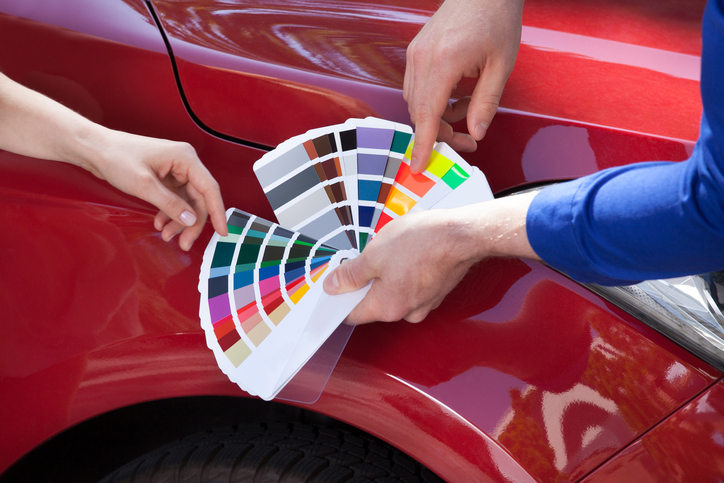
Nothing ruins a car’s appearance more than a poorly matched paint touch up, which is why automotive painting professionals have a tried and true method for finding the ideal paint match. Whether a vehicle was in an accident or just needs a couple of scratches covered up, the perfect match is essential. Finding a car’s paint match is usually the easy part, but fine-tuning the match so that the car will look flawless on the road can be a challenge.
If you’re considering an automotive painting career, read on for a brief introduction to what you need to know about matching car paint colours.
The Importance of Colour Codes for Students in Car Painting Courses
Have you ever wondered how professional automotive painters get such a perfect finish when touching up a car’s paint? It’s all thanks to a handy resource called a colour code. A colour code is a unique identification number for a vehicle’s paint. There are several ways you can identify a vehicle’s colour code. The most simple is to look for the code somewhere within the car. The code is made up of a combination of letters and numbers and will be printed on a sticker somewhere in the vehicle, often in the glove box, door jam, trunk lid, or passenger side sun visor.
If the sticker is no longer in the vehicle, which may happen with older models or vehicles that aren’t well maintained, you may be able to find out the colour code by contacting the vehicle’s manufacturer or looking on the manufacturer’s website. In order to do this, you’ll need to know the vehicle manufacturer’s name, the model number, and the year of the car. However, this process only works if the vehicle still has its original paint colour. If the vehicle was repainted and you’re looking to match the new colour, using the colour code might not be an option.
Students in Car Painting Courses Should Know About Mixing Colours for a Good Match
As you may learn during your car painting courses, a vehicle’s paint colour isn’t just composed of one single pigment. It’s a mix of several hues that are combined to make the perfect shade. Once you determine the vehicle’s colour code, you can enter it into a computer program or website that’ll tell you exactly which shades to mix together.

After you have thoroughly mixed the colours together, spray a blank card with the paint in order to do a colour match test. Once the card has dried, try holding the card up against different sections of the vehicle in different lighting. This will reveal if you need to adjust the paint mix in order to get a flawless match. This important testing process can make a big difference, and sets expert auto painters apart from amateurs!
External Factors Can Cause a Good Paint Match to Look Different
If a colour code and computer program provides the correct, exact combination of paint hues to make a paint colour, why would it need adjustments? As any painting professional with an automotive career will tell you, external factors can cause paint to vary dramatically, and getting the best result is both an art and a science.
Right from the beginning paint can vary. When the car was being painted by the manufacturer, different conditions like humidity and temperature could’ve altered the outcome of the paint job. In addition, if the manufacturer used multiple batches of paint on a year’s worth of vehicle models, the paint itself could have varied slightly.

Another reason you may find it difficult to match a vehicle’s paint to the original is because it was exposed to the elements. The sun’s strong rays, acidic rain, and strong car soaps can all cause a car’s paint colour to fade, lighten, and change colour. When this happens, using a colour that is an exact match to the colour code will probably seem too bright when compared to the old paint. This is why comparing the new colour in different lights is extremely important for a professional quality finish.
Do you want to start an exciting career as an auto refinishing prep technician?
Contact Automotive Training Centres today!

